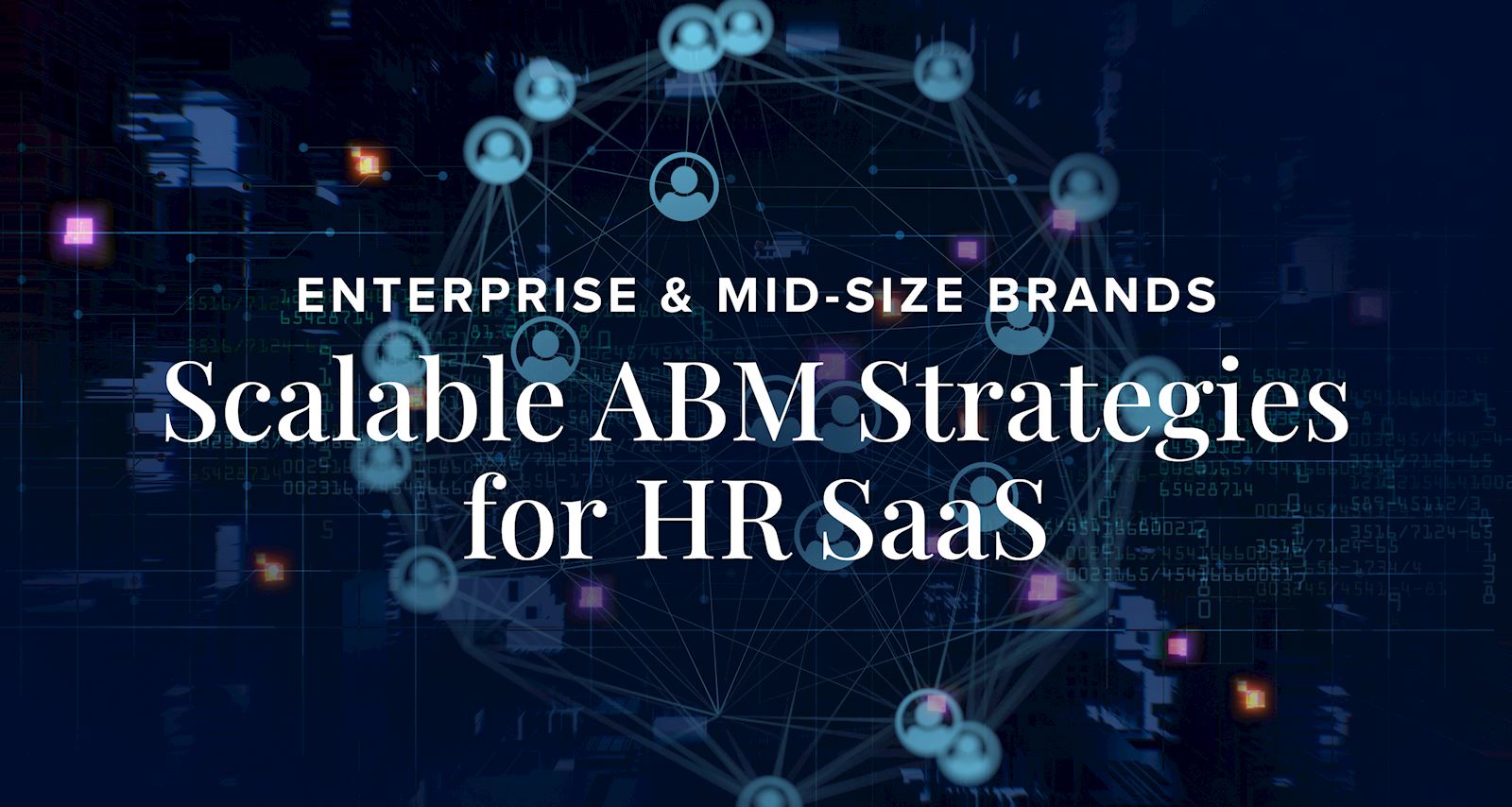ABM for HR SaaS: Scalable Strategies for Enterprise and Mid-Size Brands
Published by Spinutech on May 14, 2025

Account-Based Marketing (ABM) has become one of the most effective ways for HR SaaS companies to drive growth, enabling highly targeted, personalized engagement with high-value accounts.
But too often, it’s either underused, misused, or dismissed altogether — especially by mid-size brands that assume it’s only for enterprise players.
Here is the truth: ABM doesn’t require massive budgets or complex stacks. What it requires is focus, alignment, and a smarter go-to-market strategy.
For enterprise HR SaaS brands, ABM is about optimizing and scaling what’s already in place.
For mid-size brands, ABM is finally accessible — and it’s proving to be a competitive advantage.
Let’s dig into how top HR SaaS brands are using ABM to more effectively grow their pipeline and increase revenue.
For Enterprise HR SaaS Brands: Maximizing ABM Potential
Enterprise HR SaaS brands typically deal with long sales cycles, complex buying committees, and large-scale outreach efforts. ABM gives them the framework to cut through complexity, prioritize the right accounts, and execute coordinated campaigns that actually convert.
Precision Targeting and Ideal Customer Profiles (ICPs)
Success starts with clarity. For enterprise brands, ABM begins with sharpening the definition of your Ideal Customer Profile (ICP). Use first-party data, buying behavior, and customer success insights to identify which industries, company sizes, and job titles drive the most value — and which accounts show real buying intent.
Pair this with advanced tools like AI-powered prospecting and CRM mining to surface high-fit, high-potential targets. Precision at the top of the funnel drives better results at the bottom.
Sales and Marketing Alignment: Bridging the Gap
In enterprise environments, sales and marketing alignment is often a bottleneck. ABM works best when these teams act as one — sharing goals, data, and responsibilities. Build a shared account list, agree on KPIs, and create an integrated engagement plan that spans all touchpoints.
With a unified playbook and regular feedback loops, your teams can respond faster to buying signals and tailor outreach with greater precision.
Scaling Personalization for Enterprise Accounts
True ABM at the enterprise level means personalization — not just in messaging, but across the entire buyer journey. Segment your accounts into tiers: “One-to-one” for your top strategic accounts, “one-to-few” for priority segments, and “one-to-many” for scalable outreach.
Top enterprise brands use dynamic content, custom landing pages, tailored webinars, and personalized video to engage each segment with relevance and consistency without overwhelming their internal teams.
For Mid-Size HR SaaS Brands: How ABM Can Help You Scale
Mid-size HR SaaS companies often think ABM is out of reach. But in reality, it is one of the most efficient ways to maximize limited resources, prioritize the right leads, and deliver better ROI from every marketing dollar.
Defining ICPs and Using Segmentation
You don’t need big data to build a solid ICP. Start with what you know: Who your best customers are, what problems you solve for them, and what traits they share. Focus on industry, size, geography, and buying behavior to create a high-conversion shortlist.
Then segment your accounts into manageable groups for “one-to-few” and “one-to-many” campaigns. This keeps your efforts focused while still allowing room to scale.
Alignment Between Sales and Marketing
Mid-size teams often have a head start here — fewer silos and faster communication. Use that agility. Create shared metrics and regular check-ins between sales and marketing so both teams are aligned on target accounts, messaging, and pipeline progression.
A strong ABM strategy creates a shared scoreboard and shared wins.
Scaling Personalization with Tools and Automation
You don’t need an enterprise tech stack to scale. Today’s marketing automation platforms, CRM integrations, and ABM tools are more accessible than ever. Use them to deliver personalized email nurtures, retargeting ads, and dynamic landing pages, all triggered by behavior and intent.
Platforms like LinkedIn, Pardot, Apollo, and Vidyard help mid-size teams execute ABM efficiently, without adding headcount.
Efficiently Utilizing Multi-Channel Engagement
To reach and influence decision-makers, you need to show up where they are, consistently and contextually. A smart ABM strategy combines channels like:
- Targeted LinkedIn ads and InMail
- Personalized email nurtures
- Paid search and retargeting
- Direct outreach from sales
- Webinars and gated content offers
- Thought leadership on relevant platforms
This kind of full-funnel engagement ensures your brand stays top of mind across every stage of the buyer journey.
ABM Is About Doing What Matters — Better
Whether you’re an enterprise-level HR SaaS company or a mid-market brand, ABM is a critical component of the game plan. For enterprise brands, this means refining personalization and ensuring tight sales-marketing alignment. For mid-size brands, it’s about maximizing limited resources with smarter targeting and scalable tools.
Either way, brands executing ABM well understand the goals are the same:
- Focus on the right accounts.
- Deliver the right message.
- Drive real revenue growth.
With the right strategy and execution — and the right partner — ABM can become your most valuable growth engine.
If that sounds like what you need, let’s chat.